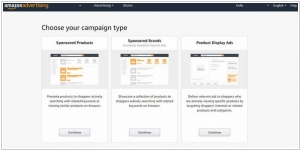Amazon Advertising vs Google Ads
November 03, 2023 | Author: Sandeep Sharma
18
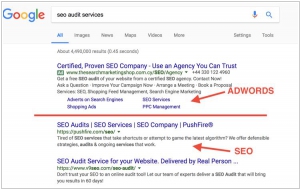
Google Ads (former Adwords) is an online advertising service that places advertising copy at the top or bottom of, or beside, the list of results Google displays for a particular search query. The choice and placement of the ads is based in part on a proprietary determination of the relevance of the search query to the advertising copy.
Amazon Advertising and Google Ads are two powerful digital advertising platforms that offer distinct advantages for businesses. Amazon Advertising allows advertisers to reach customers directly on the Amazon marketplace, targeting users based on their search queries and shopping behavior. It provides opportunities for product ads, sponsored brands, and display ads, leveraging Amazon's vast customer base and intent-driven shopping environment. On the other hand, Google Ads enables advertisers to reach a broader audience across Google's search engine, partner websites, and apps. It offers various ad formats, including search ads, display ads, and video ads, and allows advertisers to target users based on search keywords, demographics, and interests. Google Ads emphasizes targeting users at different stages of the purchase funnel and provides extensive ad tracking and performance metrics.
See also: Top 10 Online advertising services
See also: Top 10 Online advertising services
Amazon Advertising vs Google Ads in our news:
2019. Amazon launches sponsored display advertising
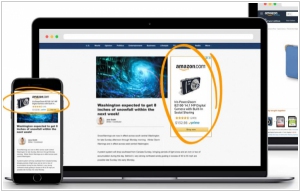
Amazon has recently introduced a new advertising campaign type called Sponsored Display, available for Vendors and professional Sellers on the platform. This new ad format fills a significant gap in Amazon's existing pay-per-click advertising offerings by enabling retargeting of Amazon shoppers. Retargeting is a highly sought-after feature, particularly for retail brands, and has long been available on display ad networks, Facebook, and Google. Previously, retargeting was accessible through Amazon's programmatic media solution, the Demand Side Platform (DSP). However, the DSP required substantial monthly spending and expert media management to effectively utilize the channel. The introduction of Sponsored Display now provides a more accessible option for advertisers to leverage retargeting capabilities on Amazon without the same level of investment or expertise required.
2018. Adwords rebrands as Google Ads, adds AI for small business
In July, Google's ad service, AdWords, will undergo a transformation and be known as Google Ads. However, this change involves more than just a rebranding. Google is introducing a new feature called Smart Campaigns, which will serve as the default mode for advertisers. Smart Campaigns empower advertisers to specify the actions they prioritize, such as phone calls, store visits, or purchases. Leveraging machine learning, Google Ads will then optimize images, text, and targeting strategies to generate a higher volume of these desired actions. This enhancement aims to enhance advertisers' overall campaign performance and effectiveness.
2015. Google Adwords will allow to target customers by email
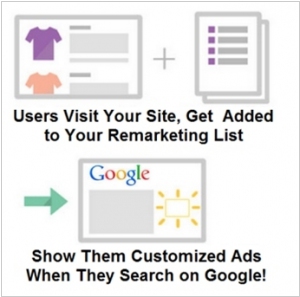
Google Customer Match introduces a fresh approach to connecting with your most valuable customers across Google Search, YouTube, and Gmail. This innovative product enables you to upload a list of email addresses, which are securely and privacy-consciously matched with signed-in Google users. Subsequently, you can create targeted campaigns and advertisements tailored to engage your specific audience. Users retain control over the ads they encounter, including Customer Match ads, by opting out of personalized ads or utilizing the options to mute or block ads from specific advertisers through Google Ads Settings. Additionally, Customer Match offers the opportunity to expand your customer base by showcasing ads to potential customers who share similar interests with your rewards members while they browse YouTube and Gmail.
2015. Google testing mobile ads with images
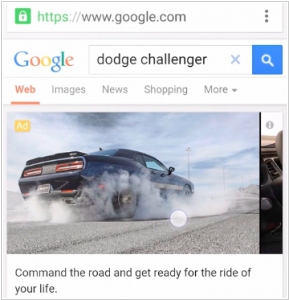
Google is introducing a change to its mobile phone Google Ads by replacing some of the text-only ads with visually enhanced photo versions. These new visual ads, currently available for car-related searches such as the Dodge Challenger, offer users the ability to browse through photos, gather product information, and make reservations directly from the search screen. This represents a significant departure from the text ads that tend to blend in with the overall search results. To cater to car buyers who are closer to making a purchase, Google is also providing franchise auto dealerships with improved location-based ads that include a click-to-call button and directions to their stores. A beta version of these ads is being made available this week. Brands that opt not to pay for the upgraded auto ads will still have the option to stick with the traditional text-only listings. While Google's mobile search results already display click-to-call phone numbers, directions, and occasional images for various business or product searches, these updates will offer companies greater opportunities to customize the user experience of their search results like never before.
2014. Adwords adds free dynamic sitelinks
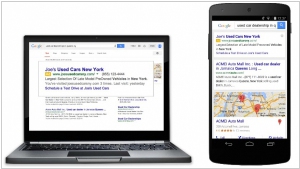
Google Adwords is introducing a worldwide rollout of dynamic sitelinks, which are automatically generated sitelinks displayed beneath your ad text. These dynamic sitelinks aim to enhance user experience by providing easier access to relevant pages on your website. According to Google, the inclusion of sitelinks improves ad relevance and the overall user experience after clicking on the ad. Notably, clicks on dynamic sitelinks are free of charge. However, advertisers will still incur charges for clicks on the ad headline and other ad extensions. Although dynamic sitelinks generally enhance ad performance, advertisers have the flexibility to disable them if desired.
2013. Adwords pulls advertisers to mobile ads
If your company is advertising via Adwords you probably regularly receive notifications to update to the new Enhanced Campaigns (until July 22). What is it and why you need it? The idea is that day by day more and more people use smartphones and more and more ad clicks are coming from smartphones. However, the value of those clicks for your business can be significantly different compared to clicks from desktop (they may be less or more valuable). For example, if you sell SaaS-service, the visitor who clicks on your ad on a smartphone can't immediately try your demo version, so the value of such click will be less. But if you're selling mobile application - these mobile clicks can bring you more buyers. ***

